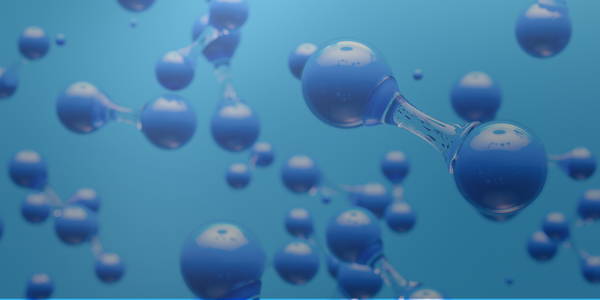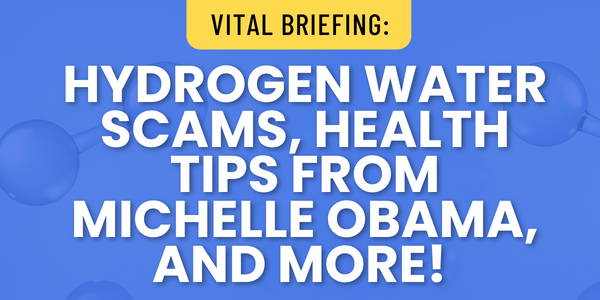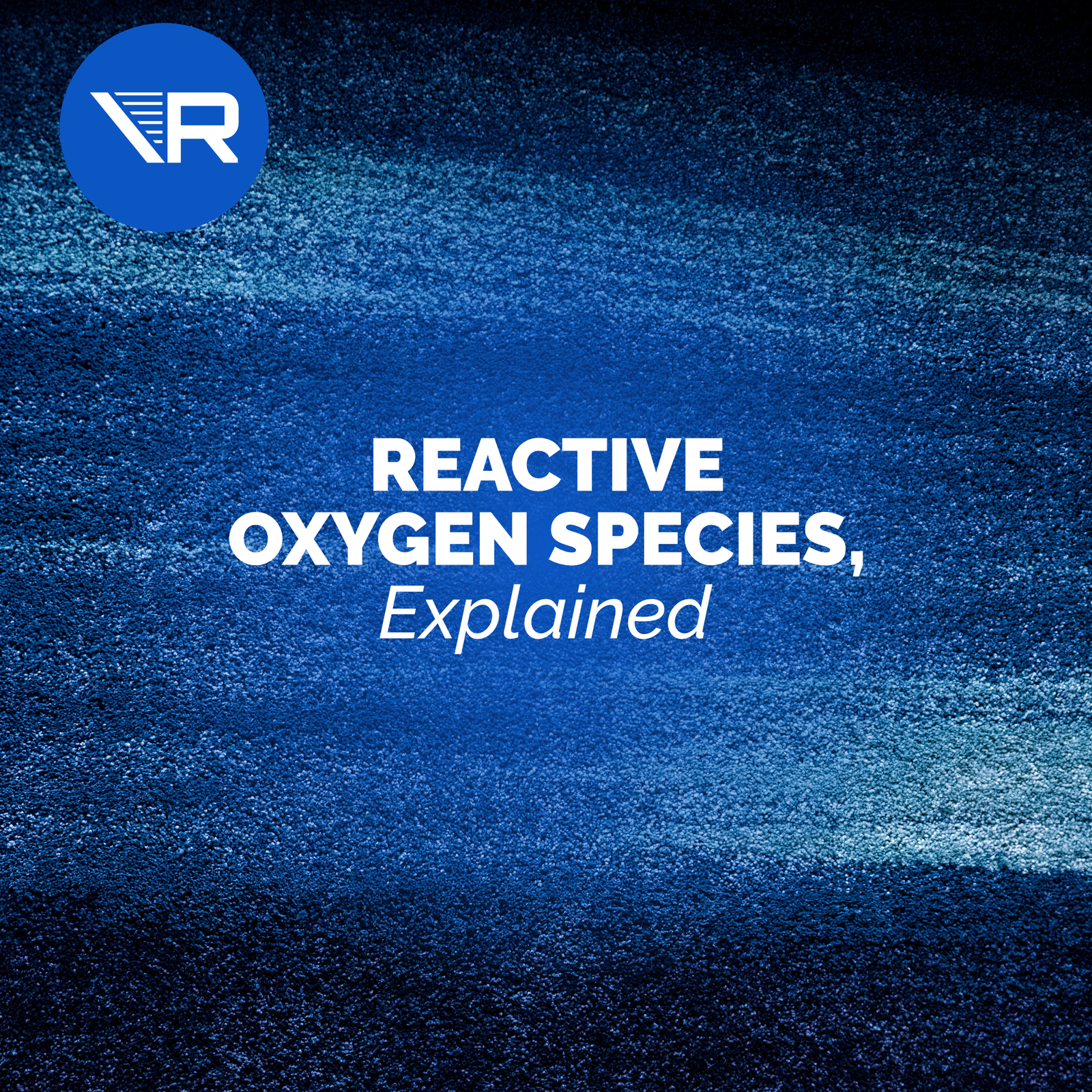
Developments in anti-aging science and research have shown us the benefits of Molecular Hydrogen.
This post talks in great detail about:
- The Free Radical Theory of Aging
- The therapeutic potential of hydrogen supported by recent findings
- Sirtuins, NAD, mTOR, and their effects on aging
Let's dive right in...
Although we didn’t realize it at the time, 2007 was an extremely important year in the progression of anti-aging science and research.
It was in 2007 that a seminal article published in Nature introduced the world to the therapeutic applications of molecular hydrogen. This landmark study shared the researchers’ discovery that molecular hydrogen had therapeutic applications as a potent antioxidant, by selectively scavenging cytotoxic free radicals.
In the 12 years since this discovery, hundreds of studies have been conducted exploring the various utilities and mechanisms of molecular hydrogen. Researchers have demonstrated that hydrogen has powerful therapeutic potential for over 170 disease processes, including cardiovascular disease, strokes, autoimmune disease, metabolic disease, organ transplantation and much more.
These findings are all tremendously exciting.
Combating disease and improving our quality of life is (and should be!) one of the fundamental goals of modern medical research.
There is however, one “disease” process, experienced by all living organisms, that is progressive, degenerative, and inescapable.
I am referring of course, to aging.
It happens to the best of us. No one gets out alive, as they say.
Source: http://www.ancientpages.com/2015/04/27/search-mysterious-fountain-youth/
Society has been obsessed with combating the aging process since time immemorial. The storied fountain of youth has been mankind’s ultimate obsession.
Advances in science and a greater understanding of human physiology have allowed us to achieve a better understanding of the cellular process of aging. These advances have allowed us to develop novel interventions to, if not halt, then at least slow the process.
Given the wide range of molecular hydrogen’s applications in so many disease processes, the question is begged...could Vital Reaction molecular hydrogen play a role in anti-aging?
Let’s look at the current state of aging research.
Source: http://www.ancientpages.com/2015/04/27/search-mysterious-fountain-youth/
Society has been obsessed with combating the aging process since time immemorial. The storied fountain of youth has been mankind’s ultimate obsession.
Advances in science and a greater understanding of human physiology have allowed us to achieve a better understanding of the cellular process of aging. These advances have allowed us to develop novel interventions to, if not halt, then at least slow the process.
Given the wide range of molecular hydrogen’s applications in so many disease processes, the question is begged...could Vital Reaction molecular hydrogen play a role in anti-aging?
Let’s look at the current state of aging research.
The Free Radical Theory of Aging
Since the 1950’s the prevailing model of the aging paradigm has been the Free Radical Theory of Aging. The theory is centered (as the name would suggest) on the formation and activity of free radicals.
A free radical is a molecule that has a single unpaired electron in its outer shell.
The reason free radicals are bad news is that electrons don’t like being unpaired. In fact they don’t like it so much that free radicals will react with other molecules to steal their electrons, creating a new free radical, and a chain reaction that can cause a substantial amount of damage to cellular organelles like mitochondria, and even to DNA.

Source: https://www.organics.org/antioxidants-vs-free-radicals/

Source: https://www.organics.org/antioxidants-vs-free-radicals/
Since the 1950’s the prevailing model of the aging paradigm has been the Free Radical Theory of Aging. The theory is centered (as the name would suggest) on the formation and activity of free radicals.
A free radical is a molecule that has a single unpaired electron in its outer shell.
The reason free radicals are bad news is that electrons don’t like being unpaired. In fact they don’t like it so much that free radicals will react with other molecules to steal their electrons, creating a new free radical, and a chain reaction that can cause a substantial amount of damage to cellular organelles like mitochondria, and even to DNA.
Free radicals can be formed by damage, as from oxidative stress, UV exposure from the sun or car exhaust inhaled during your commute. They are also formed on a continuous basis by normal metabolic activity, as a waste product.

Source: https://foodal.com/knowledge/paleo/easy-antioxidant-tips/
The Free Radical Theory of aging holds that over time, organisms are increasingly exposed to a higher number of free radicals, and the cumulative damage that these molecules inflict results in the gradual cellular breakdown that we recognize as the aging process.
There are some empirical observations that support this theory.
We do accumulate damage from reactive oxygen species over time, and aging does appear to be proportional to metabolic activity (i.e. organisms with a very high metabolic rate age more quickly than organisms with lower metabolic rates). Fasting also seems to have a positive impact on longevity.
So if the Free Radical Theory of Aging is correct, there’s good news... molecular hydrogen is a powerful antioxidant.
Molecular Hydrogen as an Antioxidant

Source: https://foodal.com/knowledge/paleo/easy-antioxidant-tips/
Multiple studies over the past decade have repeatedly supported the utility of molecular hydrogen as an antioxidant. Hydrogen is an interesting antioxidant for a few reasons.
First, it’s very small and has a neutral charge. This allows H2 molecules to freely diffuse to places few other molecules can get to so easily. This means that H2 can easily and quickly travel throughout the body, crossing otherwise impermeable membranes, like cell membranes and the blood-brain barrier.
Importantly for our aging discussion, hydrogen can even get into a cell’s mitochondria and nucleus.

Source: https://foodal.com/knowledge/paleo/easy-antioxidant-tips/
Multiple studies over the past decade have repeatedly supported the utility of molecular hydrogen as an antioxidant. Hydrogen is an interesting antioxidant for a few reasons.
First, it’s very small and has a neutral charge. This allows H2 molecules to freely diffuse to places few other molecules can get to so easily. This means that H2 can easily and quickly travel throughout the body, crossing otherwise impermeable membranes, like cell membranes and the blood-brain barrier.
Importantly for our aging discussion, hydrogen can even get into a cell’s mitochondria and nucleus.
Second, it’s not very strong. I know this sounds counter-intuitive, but hydrogen is a relatively weak antioxidant, which is actually a good thing.
Remember that we had discussed that free radicals are a normal byproduct of metabolism.
Nearly all biological processes work from a foundational premise of homeostasis- our bodies are always trying to maintain the delicate chemical balance that supports life as we know it.
So, sometimes these reactive oxygen species serve important roles as cell signalling molecules. Hydrogen is a weak enough antioxidant that it does not affect these modulatory molecules. If you sprayed your yard with an herbicide that killed everything it touched, that wouldn’t be so great. But if you had a compound that only targeted the weeds...that would be ideal.
This has led researchers to identify hydrogen as a selective antioxidant. It selectively targets the really nasty reactive oxygen species, the peroxynitrite and hydroxyl radicals, which are particularly damaging, and not very well targeted by our bodies’ endogenous antioxidant defense systems. AND, because hydrogen diffuses so easily, it has this effect on every cell in the body, AND in otherwise hard to reach places within each cell.
Finally, molecular hydrogen is so much more than just a lone antioxidant. In addition to being a front line defender, H2 also marshals the rest of the troops, and brings them to the fight. Because H2 is able to penetrate the nucleus, it has effects at the level of gene transcription, through activation of the NRF2 pathway (more on this in a bit). This upregulates your body’s production of endogenous antioxidants, like glutathione, catalase and superoxide dismutase. This combination packs an extremely powerful antioxidant punch.
This is important to combat the general damage that reactive oxygen species (ROS) can cause, and has particular implications for longevity.
Scientists now believe that a major player in the longevity equation are the tips of your chromosomes, called telomeres.
Telomeres are like the plastic caps on the ends of your shoelaces. They protect the ends of DNA strands, and shorten as we age.
Once the telomeres of a particular chromosome are gone, the cell’s lifespan is basically over.
When we are younger, we have an abundant amount of an enzyme called telomerase, which keeps our telomeres from shortening. This enzyme is particularly susceptible to oxidative stress, and as we age, damage from reactive oxygen species contributes to a loss of telomerase, and the aging and inevitable death of our cells.
This makes hydrogen an invaluable addition to an anti-aging regimen, as a powerful, selective, and safe antioxidant.
But there’s more to the story...

Source: http://bipolarnews.org/?tag=telomeres

Source: http://bipolarnews.org/?tag=telomeres
Telomeres are like the plastic caps on the ends of your shoelaces. They protect the ends of DNA strands, and shorten as we age.
Once the telomeres of a particular chromosome are gone, the cell’s lifespan is basically over.
When we are younger, we have an abundant amount of an enzyme called telomerase, which keeps our telomeres from shortening. This enzyme is particularly susceptible to oxidative stress, and as we age, damage from reactive oxygen species contributes to a loss of telomerase, and the aging and inevitable death of our cells.
This makes hydrogen an invaluable addition to an anti-aging regimen, as a powerful, selective, and safe antioxidant.
But there’s more to the story...
The Latest Anti Aging Science
A lot of our understanding has changed since the 1950s, and the Free Radical Theory of Aging has come into question.
Some studies in recent years have introduced findings that seem to conflict with the theory. While this has led some researchers to abandon the theory altogether, the truth seems to be that while oxidative damage is part of the aging process, it’s not the whole story.
This has led to exciting new areas of anti-aging research, where (spoiler alert) hydrogen also has enormous therapeutic potential.
The current frontiers of anti-aging research are focused on a few specific molecules and pathways, namely sirtuins, NAD and the mTOR pathway.
The Latest Anti Aging Science

Source: https://link.springer.com/chapter/10.1007/978-3-319-43157-4_12
Sirtuins are a group of intracellular proteins.
There are 7 of them that we’ve been able to identify, and they are so integral to the aging process that they’ve been dubbed the “longevity proteins.”
They play different roles, some in the nucleus, some in the cytoplasm and some in the mitochondria. Their primary function is as an enzyme called deacetylases. This means that they remove an acetyl group from other molecules, which affects those molecules’ functions. They impact everything from DNA replication and gene transcription to mitochondrial function and metabolism, and have been tied to a host of processes that impact longevity.

Source: https://link.springer.com/chapter/10.1007/978-3-319-43157-4_12
Sirtuins are a group of intracellular proteins.
There are 7 of them that we’ve been able to identify, and they are so integral to the aging process that they’ve been dubbed the “longevity proteins.”
They play different roles, some in the nucleus, some in the cytoplasm and some in the mitochondria. Their primary function is as an enzyme called deacetylases. This means that they remove an acetyl group from other molecules, which affects those molecules’ functions. They impact everything from DNA replication and gene transcription to mitochondrial function and metabolism, and have been tied to a host of processes that impact longevity.
These sirtuins require a cofactor called NAD to work. NAD is short for nicotinamide adenine dinucleotide. NAD is a fascinating molecule that basically plays two main roles in our bodies.
The first is the process by which we transform food into energy, and the second is as a regulator for the function of other molecules (like sirtuins). NAD is present in every cell in our body, and is critical to life.

Source: https://alivebynature.com/basis-niagen-by-elysium-health-2/
Unfortunately, as we age, NAD levels decrease, which has made figuring out how to boost NAD levels a key area of longevity research. One of the main ways in which NAD is depleted is through its role as a cofactor with PARP (poly(ADP-ribose) polymerase), which is an enzyme responsible for repairing DNA after oxidative damage.
So...imagine if there were some kind of master antioxidant that could mitigate DNA damage, thereby preserving NAD levels as we age?
(Hint: it rhymes with molecular hydrogen...)
Also- remember NRF2?
As we discussed earlier, one of molecular hydrogen’s actions is activation of the NRF2 protein, which causes the transcription of a variety of proteins related to a cell’s antioxidant defense system. Interestingly, the NRF2 products appear to work together with PARP for DNA repair and cellular protection. So molecular hydrogen has the potential to both improve the protective DNA capabilities of NAD, AND preserve NAD levels in our body as we age.
In fact, one in vitro study of human endothelial tissue showed that molecular hydrogen promoted sirtuin activity AND preserved NAD levels after exposure to a toxin.

Source: https://drjockers.com/nrf2-benefits/

Source: https://drjockers.com/nrf2-benefits/
Also- remember NRF2?
As we discussed earlier, one of molecular hydrogen’s actions is activation of the NRF2 protein, which causes the transcription of a variety of proteins related to a cell’s antioxidant defense system. Interestingly, the NRF2 products appear to work together with PARP for DNA repair and cellular protection. So molecular hydrogen has the potential to both improve the protective DNA capabilities of NAD, AND preserve NAD levels in our body as we age.
In fact, one in vitro study of human endothelial tissue showed that molecular hydrogen promoted sirtuin activity AND preserved NAD levels after exposure to a toxin.
Finally, there’s that pesky mTOR pathway.
mTOR stands for mechanical target of rapamycin. mTOR has been widely studied in anti-aging circles for some time now. This kinase seems to be the master modulator for a variety of cellular processes involving growth, development, and metabolism.
It’s generally turned on by environmental and hormonal signals promoting cell growth.
Different models have shown that inhibition of the mTOR pathway is longevity promoting. As such, it’s a popular target of potential anti-aging pharmaceuticals. Rapamycin, the antifungal for which this kinase is named, does exactly that. The problem is that while knocking out mTOR appears to help with some aspects of aging, it appears to exacerbate others.
That brings us back to NRF2. It turns out that NRF2 regulates (among other things)...the mTOR pathway! It appears to function to modulate healthy mTOR activity.
But wait- it gets even better.
Other studies have shown that activation of the NRF2 pathway has the same beneficial effects as inhibition of the mTOR pawthway!
This means molecular hydrogen, through its activation of NRF2, may have similar anti-aging benefits as pharmaceutical drugs designed to inhibit mTOR, without any of the side effects.
In fact, what makes hydrogen even cooler is that it is a selective promoter of NRF2.
Why does this matter?
Well, there’s no such thing as a biological free lunch. Having a pathway turned on all the time can be bad too.
We know this because the NRF2 pathway is a popular target of drugs aimed at combating neurodegenerative disease.
What early studies have shown is that while turning on NRF2 can help to treat these diseases, having the pathway on all the time causes other problems. Hydrogen is a selective activator, which means that it only activates the NRF2 pathway in times of cellular stress.
So you get the benefits of NRF2 activation when you need it, and none of the side effects that come from prolonged activation when you don’t.
So whether it’s through the direct mitigation of oxidative damage as we age, the preservation of NAD, the promotion of DNA repair and sirtuin action, or selective activation of the NRF2 pathway, it is clear that molecular hydrogen is going to be a heavy hitter in the anti-aging field, and should be an exciting area of research for decades to come.
What are your thoughts on the current state of anti-aging science?
What do you think of the role of molecular hydrogen in the aging process?
Share your thoughts in the comments below!




Tereza
October 26, 2023
What if we’re already taking NMD supplements? Is there any point in also taking this one?
Great question! The compatibility of NMD supplements with other products depends on various factors including the specific ingredients in both supplements and your individual health needs. It’s crucial to consult with a healthcare professional or a nutritionist to evaluate your current supplement regimen and ensure that adding another product is safe and beneficial for your health. They can provide personalized advice based on your health status and goals.